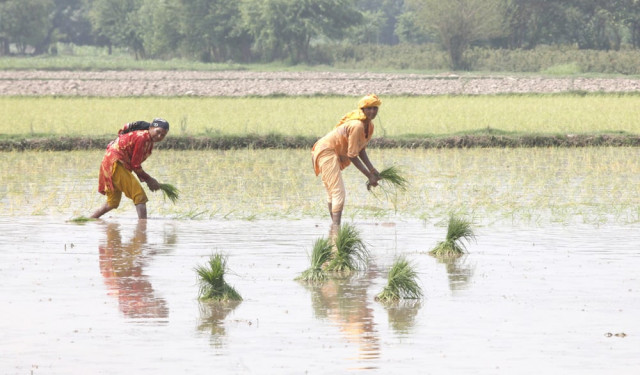Rice export has huge scope
Paddy shipments to Beijing may rise as agri-cooperation deepens

Will Basmati rice, the pride of Pakistan, appear on the dining tables of more Chinese consumers?
Customs data showed that China imported 1.95 billion yuan worth of paddy and rice from Pakistan in the first 10 months of this year, 3.9 times higher than the same period of last year.
Pakistan is the third-largest rice supplier to China. In addition, Pakistan became China’s largest rice supplier in the first five months of this year.
As China and Pakistan further deepen agricultural cooperation, rice exports to Beijing may increase.
The world’s leading rice exporters, India, Thailand, Vietnam and Pakistan compete and cooperate with each other.
India used to be the largest exporter of Basmati rice, however, due to the strict European Union restrictions on tricyclazole and carbendazim, India lost a lot of Basmati rice orders from European clients.
Meanwhile, Pakistan has become the biggest beneficiary thanks to its organic farming of Basmati rice.
Rice Exporters Association of Pakistan Senior Vice President Faisal Jahangir Malik said that three years ago, India sold 400,000 tons of Basmati rice in the European markets while Pakistan’s share was less than 40,000 tons.
“From 2020 to 2021, Pakistan’s rice exports to European countries reached 470,000 tons, while India’s share dropped below 40,000 tons,” he said.
Read ‘Agriculture sector vital for growth’
“This was made possible thanks to Pakistan’s traditional farming method. Although Pakistan’s farming methods are not modern, they are close to organic production, hence the world has confidence in the locally produced rice.”
Smog affects rice yield
For a long time, Pakistan has followed a formula for rice export – rice export equals output minus domestic consumption. Karachi Chamber of Commerce and Industry Vice President Shamsul Islam Khan told China Economic Net that Pakistan exports all it could offer.
The only way to enhance exports is to increase the rice yield.
Zhang Jiegen, the Associate Researcher at the Centre for Pakistan Studies at Fudan University, believed that China’s rice market is open to Pakistan in a way that other countries do not enjoy.
“China will provide as much quota as possible to Pakistan in order to promote the healthy development of two-way trade but Pakistan’s production capacity cannot keep up,” he said.
He cited sugar exports as an example.
In 2020, Pakistan announced a subsidy for exporters to promote sugar export to China, however, this was followed by a spike in sugar prices as Pakistan’s domestic sugar production capacity could not keep up.
Many factors affect rice yield.
Read more Australia to provide agri-training
Rice Research Institute Kala Shah Kaku Director Muhammad Rafiq was of the view that smog is a major culprit.
“When Basmati rice is not dried in time, exposure to the air produces aflatoxins. If these factors are excluded, the average yield of crops per acre will increase by 10-15 maund (40 kg),” he said.
In Pakistan, many farmers consider rice as a cash crop. They use wheat harvesters to harvest rice due to the lack of specialised rice harvesters.
Shamsul Islam Khan believed that the use of inappropriate combine harvesters affected the rice yield. “This leads to grain loss and increases breakage rate. When specialised rice harvesters are used, the yield will increase and the quality of crops will improve.”
Agricultural technology limits rice production and also has an impact on rice processing. Khan said that 40-50% of rice is broken during processing.
Rice exporters in China
In the first five months of this year, Pakistan became China’s largest rice supplier.
The main reason behind this is that China has relaxed its import restrictions on Pakistani rice in recent years.
China has allowed seven new Pakistani rice exporters to do business in the country.
So far, the number of Pakistani rice exporters that have got permission to enter the Chinese market has risen to 53.
“There are 1,800 active members in Pakistan’s rice exporters association and currently, over 800 companies export rice from Pakistan,” said Malik.
Comparing 53 approved exporters to 1,800 active members, he stated that “there is still much room for improvement in the exporter quota”.
(THE ARTICLE ORIGINALLY APPEARED ON THE CHINA ECONOMIC NET)



















COMMENTS
Comments are moderated and generally will be posted if they are on-topic and not abusive.
For more information, please see our Comments FAQ